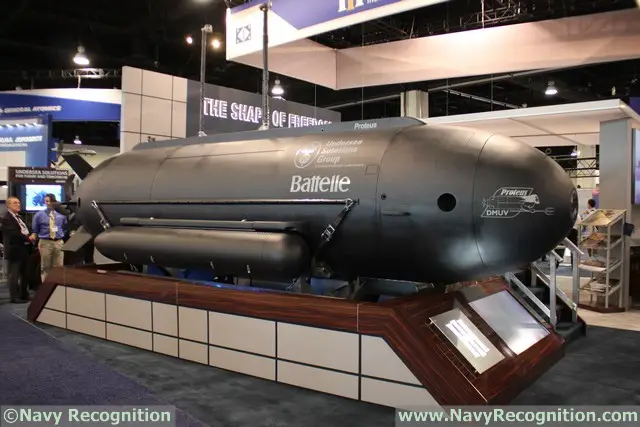 The Proteus on HII Booth at Sea Air Space 2016. Proteus is capable of operating as either a fully autonomous UUV, or as a wet manned submarine utilizing six diver’s air stations to accommodate a team of operators. Proteus can also be fitted with an optional air module in the center cargo space, capable of supporting all six divers for a period exceeding 10 hours. |
|||
On
display for the first time at Sea Air Space last year, Proteus this year
features external cargo rails and two cargo pods. These pods may be used
to store weapons or equipment. Besides pods, mines, weapons or sensors
may be installed on these rails too. The vehicle can be used for a variety of tasks including: payload integration and test; advanced autonomy development; long range and duration trials; transporting and installing equipment on the sea floor; inspecting undersea infrastructure such as bridge pilings, subsea pipelines and oil rigs; and transporting divers and cargo. Compared to conventionally-sized UUVs, Proteus can carry much larger payloads and cover much greater distances than has previously been possible, and it’s energy capacity markedly reduces the need for frequent launch and recovery. Huntington Ingalls Industries announced last month that Proteus successfully completed a 30-hour endurance test. The simulated unmanned mission was performed in a test tank at USG’s Panama City, Florida, facility to demonstrate the vehicle’s reliability and ability to perform long-duration missions contemplated for the U.S. Navy’s future unmanned undersea vehicles. Navy Recognition learned that there are plans to test Proteus with a Virginia class SSN. In addition, Undersea Solution Group may be working on a much larger UUV concept. |
|||
HII & Battelle are Showcasing the Proteus DUMV at Sea Air Space 2016
- Posted On










